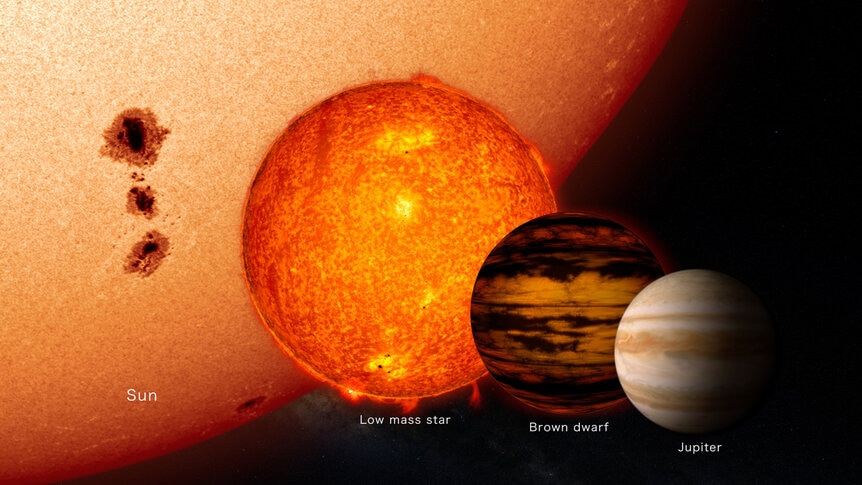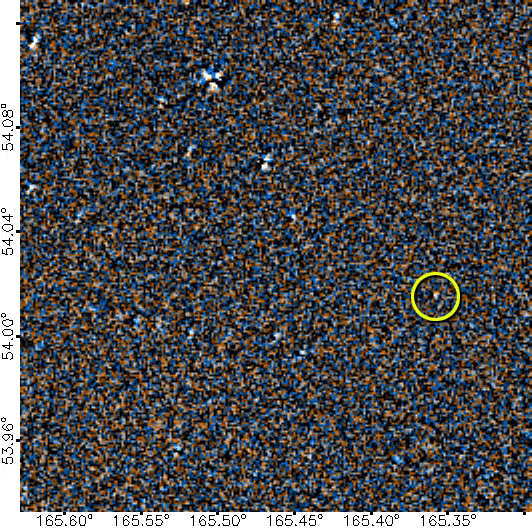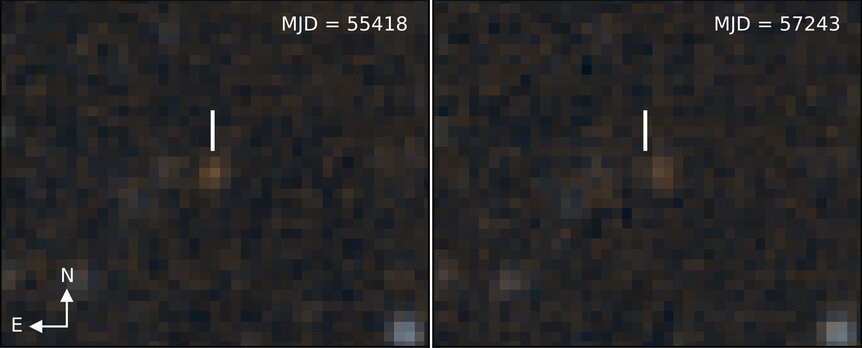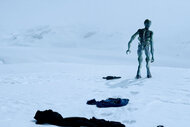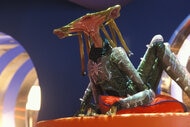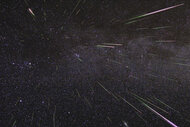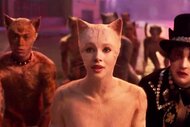Create a free profile to get unlimited access to exclusive videos, sweepstakes, and more!
'Citizen scientists' find a nearby brown dwarf
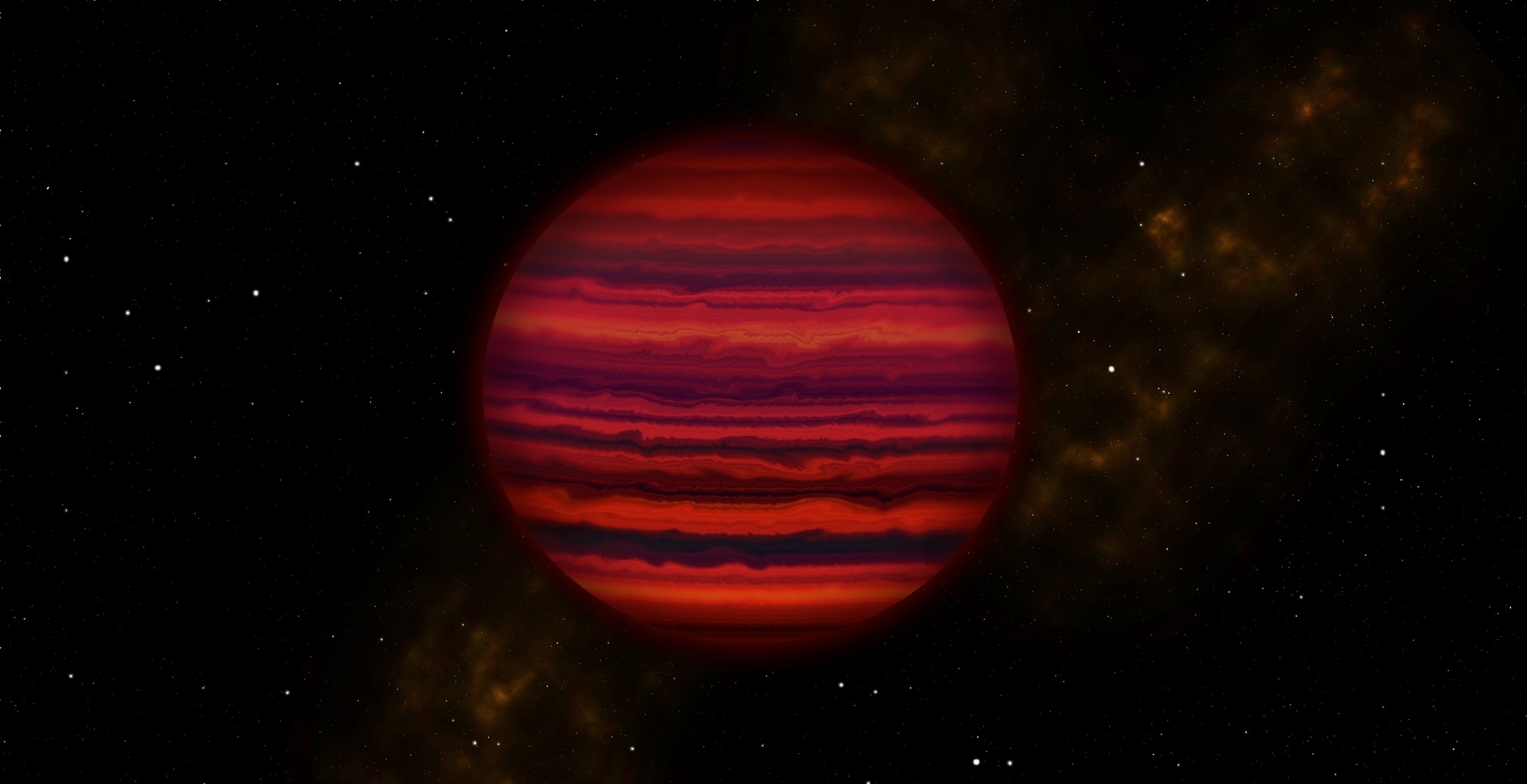
Oh, I love stories like this: “Citizen scientists” —people who are not necessarily trained scientists but are enthusiastic and eager to take part in scientific research— have discovered a brown dwarf near the Sun. They examined data taken by an orbiting observatory and found the little beastie right at the edge of the telescope’s detection capabilities.
OK, first: Simply put, a brown dwarf is an object that is in between the mass of a planet and a star. That’s really too simply put; we’re talking about a rich and diverse class of objects, every bit as varied and interesting as planets and stars themselves (for that reason, I think it’s unfair to call them “failed stars,” as some do; they are their own thing, and fascinating in their own right). You can find out a lot about them by watching my brown dwarf episode of Crash Course Astronomy:
Being warmish, brown dwarfs tend to emit most of their light in the infrared part of the spectrum, outside the color range our eyes can see. But we can build detectors that are sensitive to infrared, attach them to telescopes, launch them into space, and sweep the sky to see what’s out there.
Astronomers have done this, many times, including with the wonderful Wide-field Infrared Survey Explorer, or WISE, for several years starting in 2010. It looked in four different wavelengths (colors) of IR light, creating a vast catalog of objects in the sky — over three-quarters of a billion of them.
A lot of those objects were brown dwarfs. They were found in two ways: Either by their colors (they tend to emit light at a specific IR color, making them stand out in WISE images) or by their motion. Brown dwarfs are extremely faint, so we only see ones that are relatively nearby the Sun (like, out to 100 light-years away or so). Because they’re close, their motion in space as they orbit the galaxy means we can see them move over time … it’s just like nearby trees seem to whiz past you when you’re in a car, when more distant object appear to move more slowly. Finding moving brown dwarfs is hard; they’re faint and look little more than blips in the images. This makes automating the search difficult (computers are easy to fool). But the human eye is good at seeing such things! And such a task doesn’t need a lot of training, either.
That’s why the folks at Zooniverse decided to take this on. This is a group of astronomers and researchers who figured out that non-scientists can not only participate in scientific research but also give a meaningful contribution to it as well. They collect data in the public domain (quite a bit of astronomical data) and present them in such a way that people can analyze them through simple tasks. For example, Galaxy Zoo asks people to identify spiral galaxies and determine whether the arms open clockwise or counterclockwise. Simple, fun, and oddly addictive, in fact. I’ve identified hundreds of galaxies myself there, and they’ve published quite a few papers on the results.
They did a similar project with the WISE images. Called Back Yard Worlds, it blinks four images from WISE observations taken of the same part of the sky at different times. The images have been processed a bit, subtracting one from another, so that fixed objects like stars and galaxies are suppressed, hopefully leaving behind moving targets. Your task: Look for the things that change. It’s not easy; I just tried it and there are lots of things that can fool the eye. But if enough people look at enough images, things turn up.
And something did: On February 1, 2017, less than a week after the launch of Back Yard Worlds, a user spotted what looked like a slowly moving object. It appears as a “dipole,” a shifting spot of black and white due to the way the images were subtracted from one another. Two days later, another user spotted it, then three more not too much after that.
Clearly, the object was real. At this point, professional astronomers used NASA’s Infrared Telescope Facility, a 3-meter telescope in Hawaii, to observe the object, and they quickly determined it was indeed a brown dwarf.
It has been dubbed WISEA J110125.95+540052.8 (after its coordinates in the sky), and it’s about 110 light-years away. Not much is known about it except that it has a spectral type of T5.5, meaning it’s an intermediate mass and cool brown dwarf (with a temperature of very roughly 650-1250°C, much cooler than the Sun).
This is exciting for many reasons. For one, finding a single brown dwarf in the data implies that there are more to be discovered; the researchers estimate that more than a hundred previously undiscovered brown dwarfs should be hiding in the WISE data, waiting to be found. A half dozen or so of them may be Y dwarfs, the very coolest kind seen: Some are no warmer than room temperature!
Another reason is that I love that the public gets a chance to get their feet wet with real data. This isn’t some simulation, or some overly simplified homework assignment. This is real science, with real data, that could have a real impact. And in this case, it did, and will continue to do so. It’s wonderful that non-scientists, laypeople, can have the chance to participate in that.
And finally, there’s the potential of this. There is a lot of data out there. Did you know that all Hubble data older than one year is available through an archive? It’s not like you can just grab it and discover strange, new worlds —unlike Zooniverse, CosmoQuest, and other citizen science projects, there’s a huge overhead and learning curve with Hubble data— but there are thousands upon thousands of images and spectra just waiting to be analyzed, far more than the scientists who took them could ever hope to process.
And that’s just Hubble. Cassini, the Mars rovers, Juno … there are dozens of observatories and spacecraft with data just sitting there. What treasures lie within? What discoveries patiently await us? What new kinds of objects, old objects behaving in new ways, new phenomena, have already been captured by these eyes on the sky … biding their time until human eyes gaze upon it?
This idea is thrilling. The whole Universe is out there, and you can be a part of unveiling it.
Tip o’ the dew shield to Astrobites.
